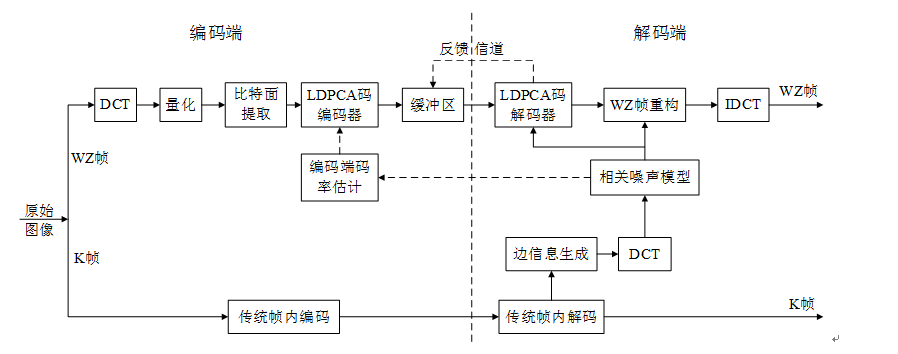分布式视频编码(Distributed Video Coding, DVC)主要的特点是编码端简单、解码端复杂、解码传输延时大以及传输鲁棒性高等,这些特点可以使其很好地满足计算能力受限的低功耗编码终端设备的应用需求。下图为较为典型的分布式视频编码结构-Discover方案。
图1 DISCOVER视频编码框架
......具体可以通过百度学术或者中国知网搜过相应关键词来查阅相关参考文献......
在对比实验中,经常会与Discover方案、H.264/AVC Intra 模式以及H.264/AVC Inter Motion模式进行对比,具体的对比实验数据可以参考网址:http://www.img.lx.it.pt/~discover/rd_performance.html,该网址虽然没有提供源代码,但是提供了较为详细的实验对比数据,如果你的实验参数跟它设置的一样,就可以直接借用。可以主要记录一下H.264/AVC Intra 模式以及H.264/AVC Inter Motion模式的工作原理。
- H.264/AVC Intra: Video coding with H.264/AVC in Main profile without exploiting temporal redundancy; this type of Intra coding is the most efficient Intra (video) coding standard solution, even more than JPEG2000 for many conditions. However, it is important to notice that H.264/AVC Intra exploits quite efficiently the spatial correlation (at a higher complexity cost when compared to H.263+ Intra) with several 4×4 and 16×16 Intra modes, a feature that is (still) missing in the DISCOVER codec.
- H.264/AVC Inter No Motion: Video coding with H.264/AVC in Main profile exploiting temporal redundancy in a IB…IB… structure but without performing any motion estimation which is the most computationally expensive encoding task. The so-called “no motion” mode achieves better performance than Intra coding because it can partly exploit temporal redundancy by using a DPCM temporal scheme, but requires far less complexity than full motion compensated Inter coding because no motion search is performed.
